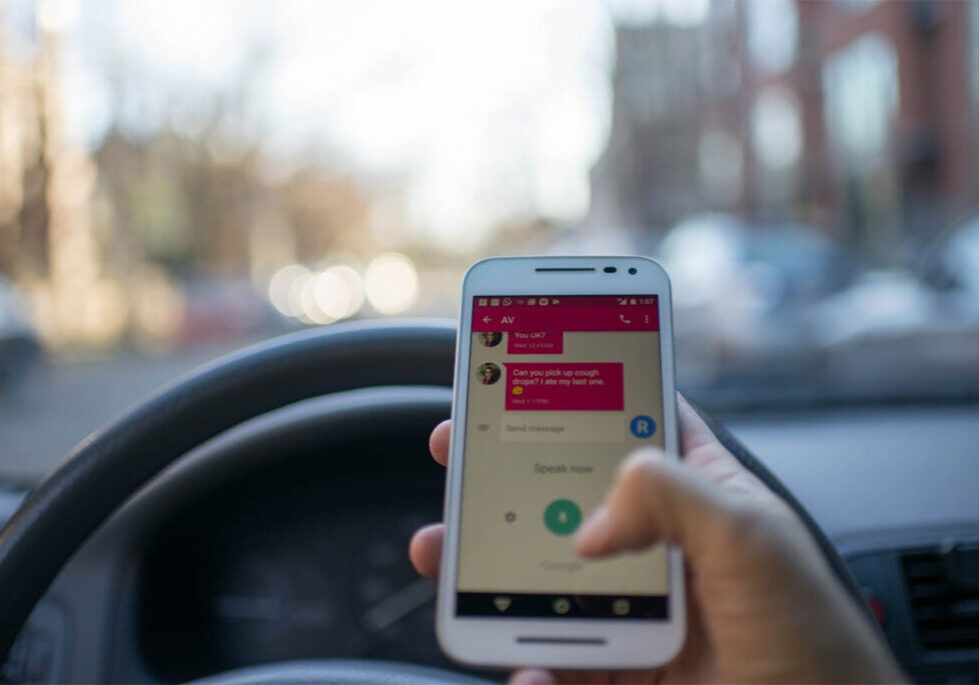Newer cars are safer cars. One reason for this is the enormous leap in car safety year over year. Case in point: the Insurance Institute for Highway Safety (IIHS), a nonprofit organization that crash tests new vehicles, awarded more Top Safety Picks in 2021 than ever before.
Automotive manufacturers continue to develop new safety technologies and features which are designed to help drivers make it to their destinations safely.
New car safety technology has already saved thousands of lives, and future technology is even more promising.
Car safety advancements have saved the lives of upwards of 600,000 people between 1960 and 2012.
The NHTSA estimates that new vehicles on the road have a 56% lower fatality risk for occupants than a comparably-sized car from the 1950s. All told, the NHTSA says vehicle safety advancements have saved an estimated six-hundred thousand lives over the years.
Car safety has come a long way. Today, consumers value safety just as much as any other factor when buying a car—fifty-one percent of new car buyers want a rearview camera, and forty-five percent want a blind-spot monitoring system in their new car. These safety features did not even exist until the last ten to twenty years, and now they are standard equipment on most vehicles rolling off the lot.
Consumers want safety, and car manufacturers are delivering.
Today, nearly all new vehicles from all brands are equipped with some type of crash avoidance or mitigation system. Many of these systems even come standard on base level cars, though buyers often have to pay a premium for features like 360° surround view. Some of the most popular and effective car safety features available today include:
Lane-Keep Assist: Lane-keep assist makes small adjustments to ensure the car stays in the correct lane. Some cars make a noise or emit a light on the dash to alert the driver of system activation, whereas other vehicles make minor adjustments to the car’s orientation without warning.
Lane-Departure Warning: Unlike lane-keep assist, lane-departure warning systems do not make minor adjustments. Cars equipped with this system will only make a noise or emit a light on the dash to alert the driver to steer the car within the lane.
Automated Emergency Braking: Using cameras and/or radar, automating emergency braking stops the vehicle automatically before a driver can press the brake themselves. These systems work by measuring the distance of cars ahead. The system will stop the car automatically once the car is too close to the rear of another vehicle.
Pedestrian Detection: This system will detect pedestrians through the use of cameras and/or radar. Some cars equipped with this system will brake automatically, while other cars will simply alert the driver.
Blind Spot Monitoring: Sensors equipped in the rear of the vehicle monitor adjacent lanes for traffic that the driver cannot see in their mirrors. Most cars with this feature have a warning light that illuminates on the exterior mirror, clearly visible from the driver seat.
360° Surround View: 360° surround view provides a 360° picture of the outside of the car. Used mainly when parking, the view is displayed on the infotainment screen. Multiple cameras positioned around the car generate the image.
Keep in mind that not all new cars come with the above features, and most automakers use their own in-house system. For instance, Honda’s lane-keep assist may be more sensitive to its surroundings than Toyota’s lane-keep assist. Get in touch with the auto dealer directly if you have more questions.
Here are four car safety features expected to debut in the near future.
Cars themselves are smarter than ever before. Manufacturers are taking big advantage of the increasing amount of computing power available today. That processing power makes it possible to make features like lane-keep assist and forward-collision warning standard on new vehicles.
With this in mind, it is not surprising that manufacturers are testing new, even more complex features. Here are four new safety features expected to be available on new cars in the coming years:
1) Augmented Reality Displays: Augmented reality displays are designed to provide the driver with all the information they need, from navigation to the song playing on the radio, in the immediate field of view. This tech is similar to (but more much advanced than) heads-up displays, which project information like vehicle speed and time on the front window just above the dash.
The augmented reality displays in testing today can track the driver’s eyes to make sure vital information is always displayed in their line of sight. Developers have even found that drivers are quicker to react to augmented reality displays than chimes and beeps, which don’t actually convey information. The question is, will this technology be a distraction for the driver’s field of vision? Time will tell.
2) Adaptive Driving Beam Headlights (ADB): Have you ever been blinded by oncoming headlights when driving at night? It’s a common problem. Adaptive headlights are designed to alleviate this issue by automatically shifting your headlight beam away from oncoming drivers.
ADB headlights use shutters that momentarily shield light when an approaching vehicle is detected. Some LED-based ADB headlights will actually turn off a portion of the lights to mitigate the glare posed to other drivers.
Europe has already adopted this technology. A 2019 AAA study found that European cars affixed with ADB headlights illuminate the road 86% better than U.S. vehicles with standard low-beam lights.
The good news for American drivers is that the 2021 infrastructure bill makes ADB headlights legal in the U.S., so we should be seeing them on the road in the near future.
3) Active Driver Monitoring: If you have ever momentarily turned your attention away from the road, well, you are not alone. But drivers who pay full attention to the road at all times make it safer for everyone. That’s where active driver monitoring comes into play.
Active driver monitoring works by alerting you when your attention has lapsed. If you have experience driving a semi-autonomous vehicle, then you may already know about this technology. You will get a chime or beep and visible reminder to keep your hands on the wheel and pay attention.
Currently, this feature is mostly found in luxury vehicle models. However, automakers plan to start installing active driver monitoring systems in more standard models. A major problem they want to solve is accidents resulting from drivers experiencing medical emergencies behind the wheel. A medical emergency can incapacitate the driver and leave the car moving out of control. Active monitoring systems can be coupled with other safety features to automate braking and steering to bring the car to a safe stop, reducing the likelihood of a crash.
4) Interior Motion Detection: Leaving a child or a pet in a hot car can result in tragedy. Approximately 40 children die from heatstroke each year after being left unattended in a hot car.
Manufacturers are trying to eliminate this possibility with interior motion sensors that detect if someone has been left inside a car. The car is then programmed to sound an alarm, and can even send a notification to the car owner’s phone.
Automakers Hyundai and Kia already have a form of this in some models, but experts support legislation that would make it standard in all new model cars.
While a popular feature, autonomous driving requires significant improvements, as humans are still better at driving a car.
Tesla was one of the first automakers to bring semi-autonomous driving to the market. But Tesla Autopilot does not turn the car into a fully autonomous vehicle.
These systems are capable of semi-autonomy, meaning the car can steer itself, maintain speed, and brake automatically, even on the highway. Some semi-autonomous cars can switch lanes on their own, too. But they can be limited in inclement weather, like rain or snow. And reports of poor real-world performance are common.
To date, no auto manufacturer has released a fully autonomous car. The IIHS warns that fully self-driving cars will not eliminate traffic accidents.
Driver mistakes play a role in most crashes. That is why automation has been held up as a potential game changer for safety. But autonomous vehicles might prevent approximately one-third of all crashes if automated systems drive too much like people.
The Institute’s analysis suggests that only about one-third of [all crashes] were the result of mistakes that automated vehicles would be expected to avoid simply because they have more accurate perception than human drivers and aren’t vulnerable to incapacitation.
However, reducing the incidence of accidents is a worthy goal, and with the variety of other new safety features on the horizon, driving will become safer than ever before. But there have been a number of autonomous vehicle accidents which will be discussed in a future blog.
Vehicle safety technology has come a long way, and improvements will continue in the near and far future.
If you are shopping for a new vehicle, you are probably familiar with the long list of safety features that each manufacturer boasts about—and that’s a good thing! It has been proven that new vehicles manufactured today are safer than at any point in the past. This cycle will continue as technology is tested and implemented in new cars in the future.
When you are ready to purchase a new car, do your research. The IIHS has a database of crash test results, and more recently they have begun scoring safety features like automatic braking to give consumers a sense of how these features actually work.



